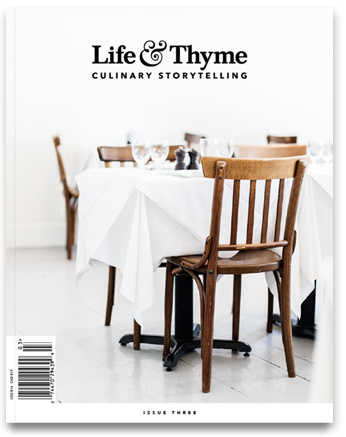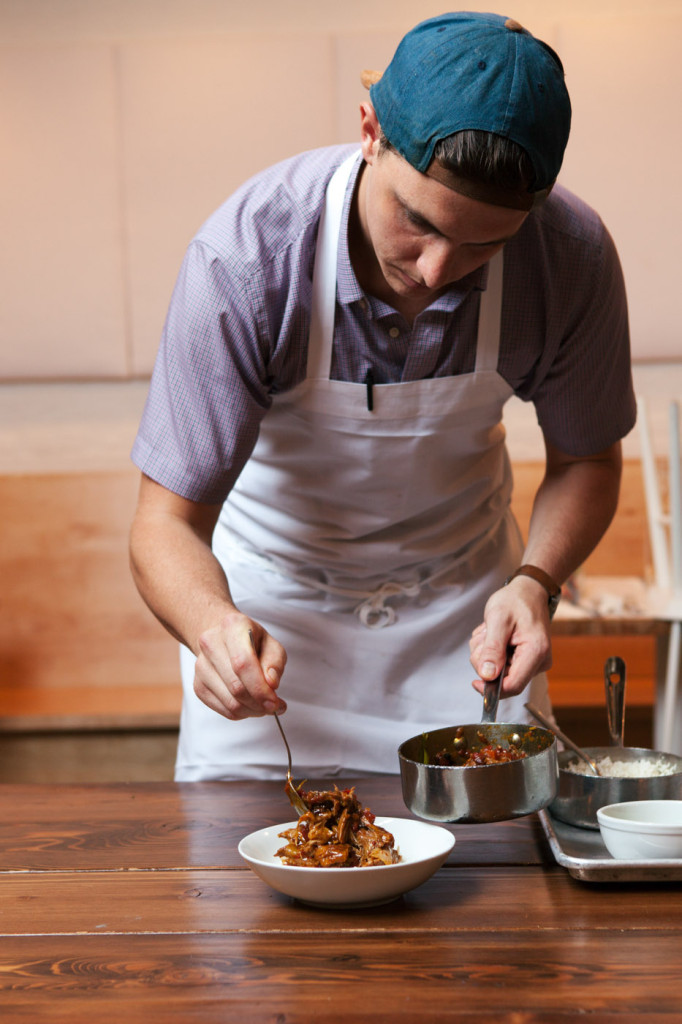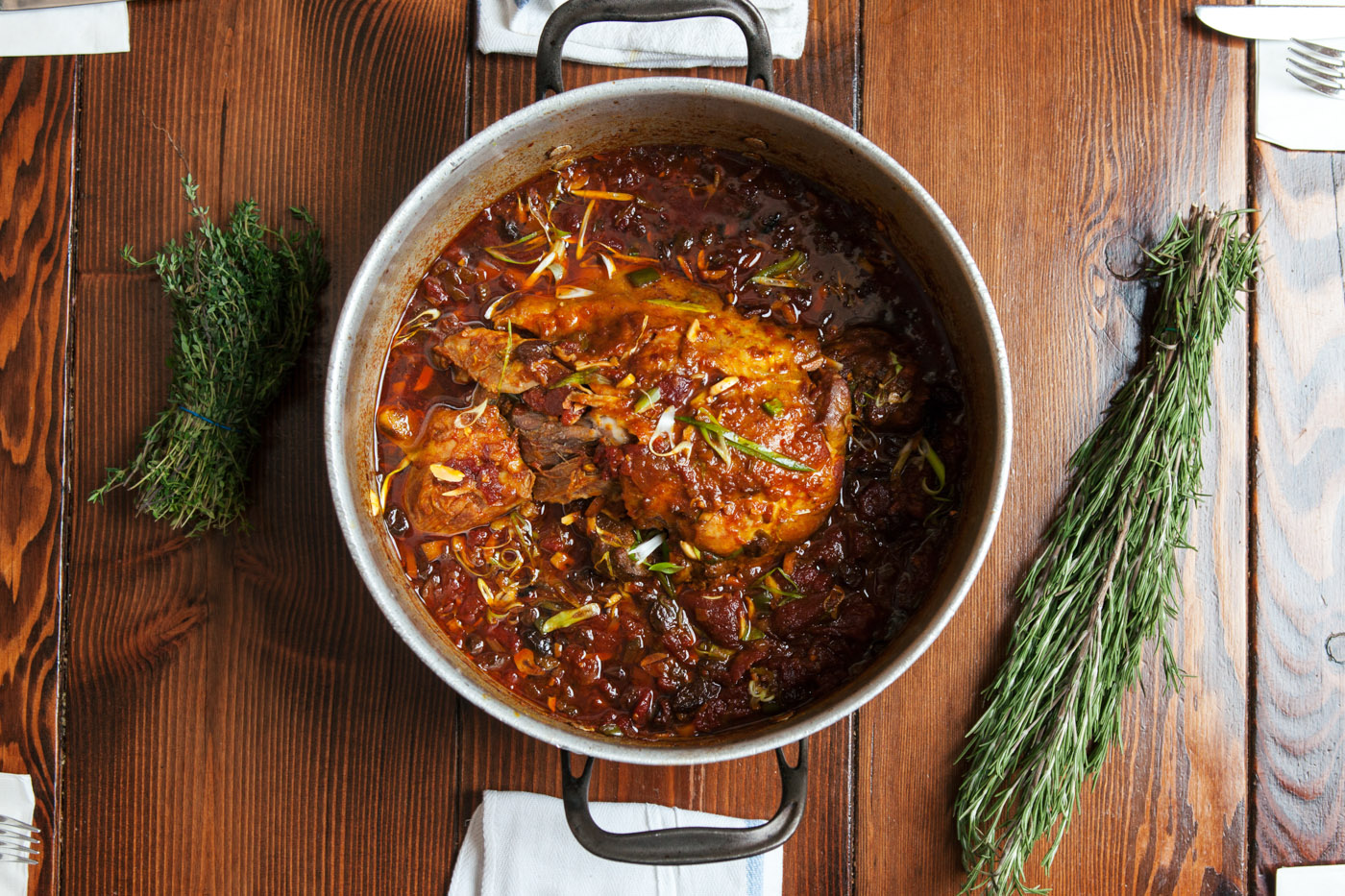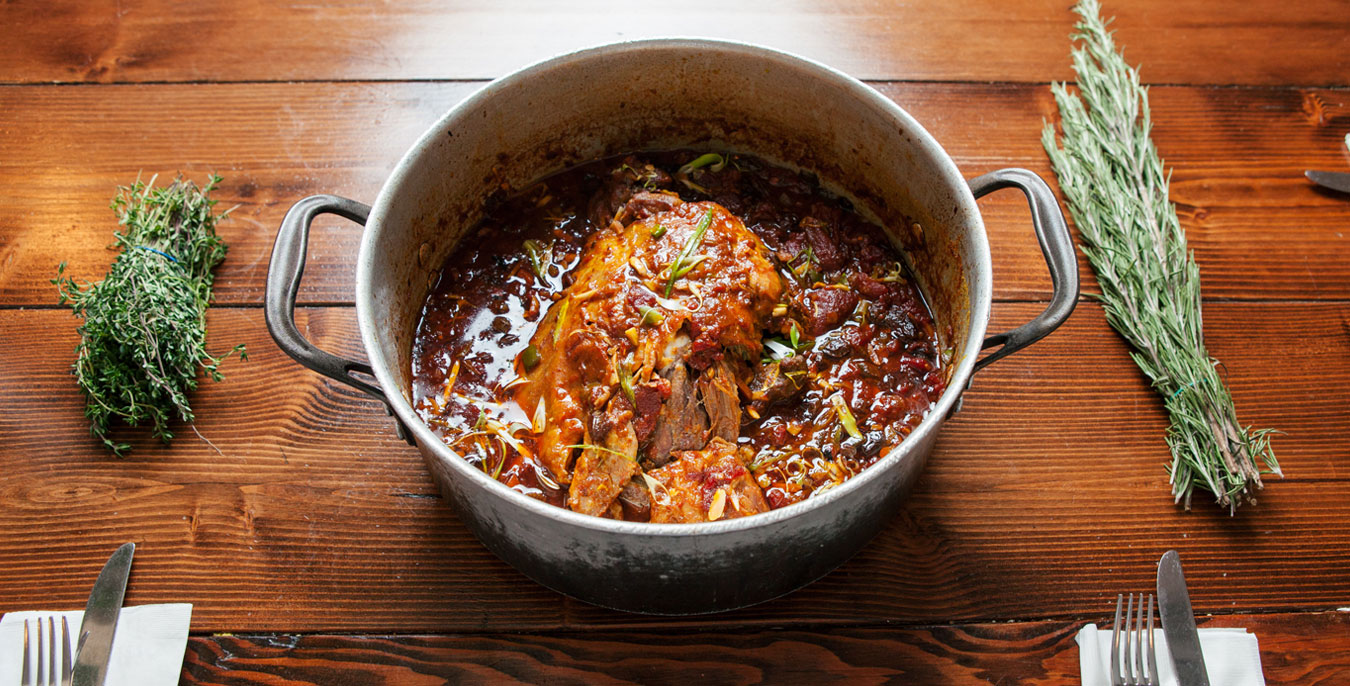Off the Menu
 Editor’s note: “Off the Menu” is an ongoing series dedicated to companion stories to our print magazine. Today’s recipe comes from chef Evan Hanczor of Brooklyn’s Egg. Be sure to read our print-only feature on No Goat Left Behind in Life & Thyme Issue Three.
Editor’s note: “Off the Menu” is an ongoing series dedicated to companion stories to our print magazine. Today’s recipe comes from chef Evan Hanczor of Brooklyn’s Egg. Be sure to read our print-only feature on No Goat Left Behind in Life & Thyme Issue Three.
— Order Your Copy
Country captain is a traditional, if lesser known dish from the southern canon––though its origins are beyond consensus. Some say it’s from Philly, some Savannah, others Charleston––and even some allege that it’s from New York City. One tale is that British officers working in the spice trade in India brought this sort of dish and flavors to the American kitchen. But to whomever was actually responsible for it, we thank you.
We started making this dish at Egg during one of the first years of Heritage Foods’ No Goat Left Behind campaign. Though country captain usually features chicken, its curry flavor was a no-brainer with goat and a perfect way to braise down any part of the animal we weren’t using elsewhere. The great thing about this dish is that though the goat is dressed in comforting flavors, it isn’t covered up, so it’s a good bet for both goat lovers and converts alike.


We generally serve this over carolina gold rice and sometimes with an egg on it, but you can pair the dish with just about anything––grits, polenta, as a ragu for pasta, on a roll or––as we usually do––scooped generously over carolina gold rice.
This recipe yields a good glut of ragout (about a gallon), so make it for a party––it’s very dramatic coming out of the oven and you can let guests pick and shred their own meat. Save any leftovers and use them for sliders or a breakfast hash. The captain is even better the second or third day, and also freezes very well.

Goat Country Captain
Cook Time: 2 1/2 to 3 1/2 hours
Active Time: 30 to 40 minutes
1 whole goat leg, shank removed, bone-in (4 goat shanks, 2 goat necks, or one whole goat shoulder can be used in place of the leg)
3 tablespoons extra virgin olive oil
1 cup diced onion
½ cup diced green bell pepper (seeds and ribs removed)
½ cup diced celery
2 tablespoons chopped garlic
1 cup raisins
6 cups goat, beef, or chicken stock
4 cups chopped canned whole peeled tomatoes plus juice 2 tablespoons curry powder
1 tablespoon salt
1 cup toasted almonds (chopped or slivered)
A couple of fresh mint sprigs
Preheat your oven to 325 degrees. In a large pot (a rondeau or a wide dutch oven work well), heat half the olive oil.
Lightly salt the goat leg all over and sear on each side in the oil until browned as evenly as you can achieve.
Remove the goat leg from the pot and add the remaining oil, plus all the chopped vegetables. Sweat the vegetables down over medium-high heat, stirring regularly, until they are softened and lightly browned, about 10 minutes. If there is too much browning on the bottom of your pan, deglaze with a splash of white wine or water.
When the vegetables are softened and colored, return the goat leg to the pot. Add the raisins, stock, tomatoes, curry powder and salt (this should about halfway cover the leg).
Cover with a lid or foil and place in the oven. Cook in the oven for 2 to 3 hours (checking after 2) until the meat is quite tender and pulls easily from the bone.
Remove from the oven and let cool for about 20 minutes uncovered. Using two forks, a pair of tongs or your hands, pull the meat from the bones. Remove the bones from the pot, and shred the meat roughly (it should be a mix of chunky and shredded meat). You can do this on a cookie sheet or in a bowl outside of the pot, then add the pulled meat back to the sauce if you like. Be sure to check through the sauce for any bone fragments that may have loosened during cooking.
Once the goat is back in the sauce, taste and adjust the seasoning. Garnish with toasted almonds and torn mint leaves, and enjoy!
—
egg
109 N 3rd St, Brooklyn, NY 11249



Our comments section is for members only.
Join today to gain exclusive access.